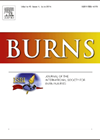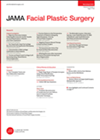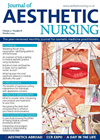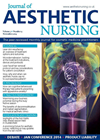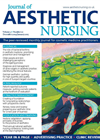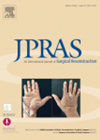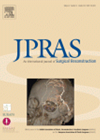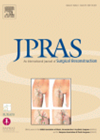
Journal Reviews archive for April 2015
Management of keloid and hypertrophic scars
The management of keloid and hypertrophic scars is commonplace in all burns and plastic surgery outpatient clinics, and in this paper the authors review many of the current treatments available for this difficult problem. They start with an introduction about...
How accurate are doctors in estimating burn size
This was a retrospective review with data collated from two burns units in Sydney, Australia. The purpose of the study was to compare total body surface area (TBSA) burn size estimation between referring centres and burn units in adult patients....
Is rib cartilage a safe material for rhinoplasty
This is a meta-analysis of complications associated with use of autologus costal cartilage in rhinoplasty involving 10 studies with 491 patients with a mean follow-up of 33 months. The results of the meta-analysis show a very low rate of complications...
Stairsteps to breathing
Surgery of the nasal valve is a particularly challenging aspect of functional rhinoplasty surgery. The nasal valve area represents the segment with the smallest cross-sectional diameter of the entire airway. The authors of this article present a novel method to...
Mastering the art of lip rejuvenation
The author presents a sound overview of some of the most prevalent non-surgical techniques used for lip rejuvenation, capturing the challenges in treating a complex anatomical region, as well as the attention required to the surrounding areas; nasolabial region and...
Emirati aesthetics
The author presents an account of the role of aesthetic nurses in the United Arab Emirates (UAE). The current article is part of a series examining aesthetic nursing practices and cultural perceptions of beauty across the globe. An interesting report...
Older people and skin challenging perceptions of the ageing process
This is an interesting account of the dermatological senescent changes with a strong focus on the pivotal role nurses can provide in promoting good skin health practices. A comprehensive description of underlying physiological changes and the physical manifestations is presented...
Modified temporalis muscle transfer for facial palsy
Use of the temporalis muscle to mitigate the deformities of facial palsy is an accepted technique, but getting the temporalis muscle into the correct position, with the correct tension, is difficult but essential if the operation is to be successful....
Multiple free flaps for head and neck cancer
Most patients with advanced head and neck cancers now undergo microvascular free flap reconstruction. This is mainly as flaps facilitate complete tumour and margin removal by providing reliable wound coverage and better restoration of form and function. However, despite this,...
Nasal deformity following CPAP injury
Nasal continuous positive airway pressure (nCPAP) is commonly used as a non-invasive alternative to endotracheal intubation and tracheotomy, to provide respiratory support to very low birth weight (VLBW) (<1500g) neonates. Nasal injury is a well recognised complication and figures quoted...
Surgical indications for infantile haemangiomas
Infantile haemangiomas (IHs) are embryonic tumours and represent the most common tumour of infancy, with an estimated incidence of 4-5%. There is a well described natural history, usually becoming apparent in the first few weeks of life and proliferating rapidly,...
Semi dynamic reconstruction of the lower lip
The main goal of reconstructive surgery for facial paralysis is the restoration of smiling and function of eye closure. The deformity of the lower lip in paralysis is ptosis of the corner of the mouth, eversion of the vermillion and...

